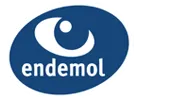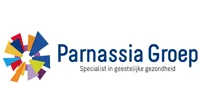A Service Level Agreement is often a thick document full of KPIs that prescribes exactly what a cooperation between an IT provider and IT partner should look like. The idea behind this is that the customer gets the best service. In practice, things often go differently: SLA met, customer dissatisfied.
What is the difference between SLA and XLA?
How do you measure customer experience?
What is the added value of XLA in Device as a Service?
What is the difference between SLA and XLA?
“Unfortunately, an SLA is not about the people and making impact, but about processes," says Marco Gianotten, CEO of research and consultancy firm GIARTE. So he decided to develop his own frame of reference that focuses on customer experience, business impact and effective collaboration: Xperience Level Agreement (XLA).
“I started out as sort of Don Quixote because I want the service management profession to be about what really matters again.”
The big difference between the Service Level Agreement (SLA) and the Xperience Level Agreement (XLA) is that the former focuses primarily on the output, while XLA is more about the outcome. In practice, an SLA is more about processes, while the XLA is more about human experiences.
Marco draws the comparison to a restaurant. "There, the output is about the quality of the ingredients, while the outcome is much more about whether the customer experienced a great evening. The difference between output and outcome is substantial.”
“For example, many end users don't feel well served by the service desk," Marco says. "This is because IT people immediately shoot into solution mode, without listening to the actual problem. The user then senses that the IT person is not taking him or her seriously.”
Two complementary forms
An important detail: the XLA is not meant to completely replace the SLA. The two forms work best complementary to each other. Marco likes to compare it to the left and right hemispheres of the brain. Each has its own function, but they cannot work without each other: the reality about the details is on the left (SLA), the view of the bigger picture is on the right (XLA).
“IT is an incredibly valuable field, but we have to get people to do things that are useful. It should not be that for the business, users and customers, the acronym SLA stands for secrets, lies and assumptions.”
 How do you measure customer experience?
How do you measure customer experience?
There are companies that simply add more KPIs about processes to the SLA when they are in danger of losing their grip on customer satisfaction. As a result, SLAs often become huge documents that no longer contribute to the company's goals. A checkmark culture then develops.
“Managers then have the perverse incentive to check a box when a certain activity has been performed. Processes are measured, rather than important things like productivity, customer experience or time to market." You do measure those with an XLA.
How you measure these factors is also important. You can use a survey, of course, but you have to ask the right questions. "I often see the question "Would you recommend program X to your friends or acquaintances?" come up. But if you start touting software in the pub, something is going badly wrong!”
Another disadvantage of these types of surveys, is that they are often not completed. Then they automatically don't count. "An alternative would be to hold focus groups, for example, but many companies find it very difficult to receive criticism.”
The added value of XLA in Device as a Service
XLA's focus on the customer experience is also clearly reflected in the principle of Device as a Service at NEG-ITSolutions. Here you are completely relieved as a customer, from the choice of devices to deployment and eventual disposal. “Device as a Service is not just about making sure processes are right, you deliver from the employee journey," Marco says.
“I think a lot of digitally creative employees are not getting what they need in terms of IT. That starts as early as onboarding. If you get a laptop that doesn't suit you, but don't get to get a new one until three years from now, you'll be gone in no time. So HR and IT have to work well together when it comes to DaaS.”
“The essence of DaaS is in asset management tracking. We have a lot of objective data about what an employee needs right now. If an important function of my notebook falters, NEG-ITSolutions can replace it before it really breaks down. That's the power of DaaS.”


Rapid response to peaks and troughs in Endemol's workplace requirements
"Managing stock, unpacking, labeling, preparing and quickly installing on demand, NEG-ITSolutions does it all. We don't get to see a box, don't have to worry about it."
Edwin de Bie
Infrastucture Manager
Endemol Nederland Mediagroep

NEG helps you decide whether the investment is worth it and whether better/more sustainable options are available. New or refurbished. It’s not just the price; the service, reachability and goodwill factor are also reasons for choosing NEG. They always score very well in all these areas.
So we can definitely recommend NEG, as we can ask them anything.
Michael Ruitenbeek
IT coordinator
Fortes Lyceum

We received the thin clients ready for use, with all the right settings, conveniently repackaged and coded. Even when circumstances meant Parnassia ordered late, the process was scaled up when necessary to speed things up and meet deadlines.
"I’ve been in the business for 20 years but never before have I come across such a level of flexibility.”
Lex de Groot
Technical Project Manager
Parnassia Groep